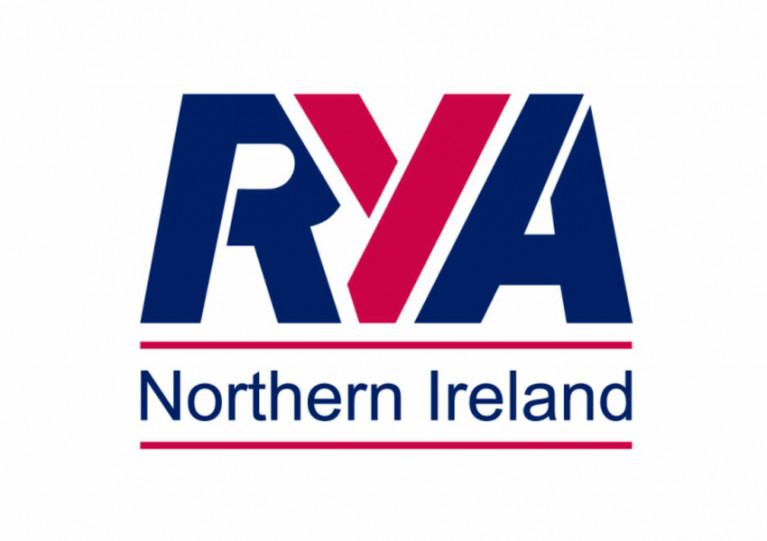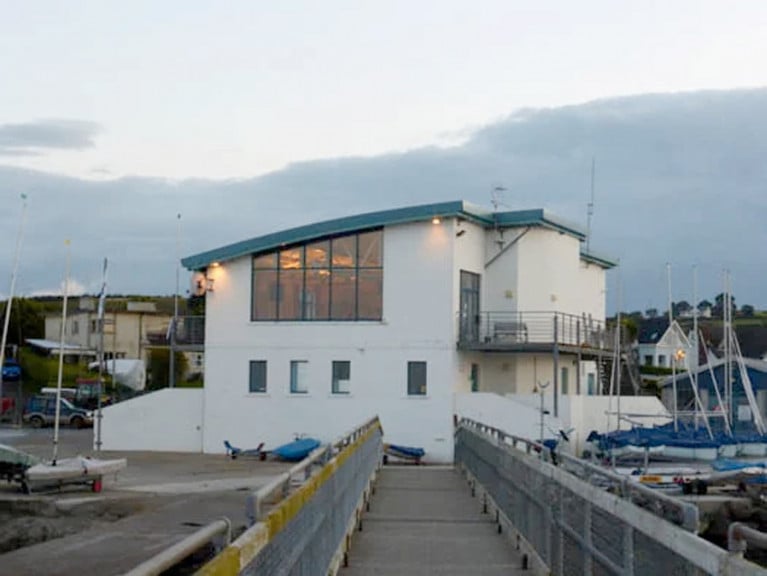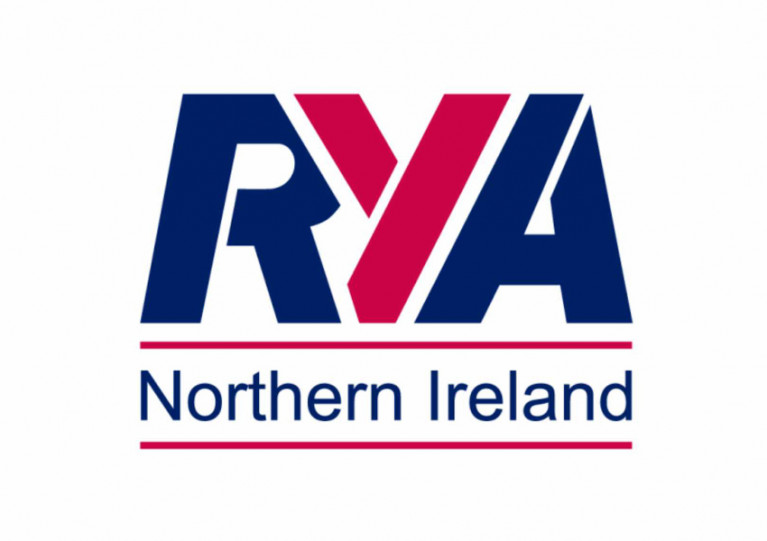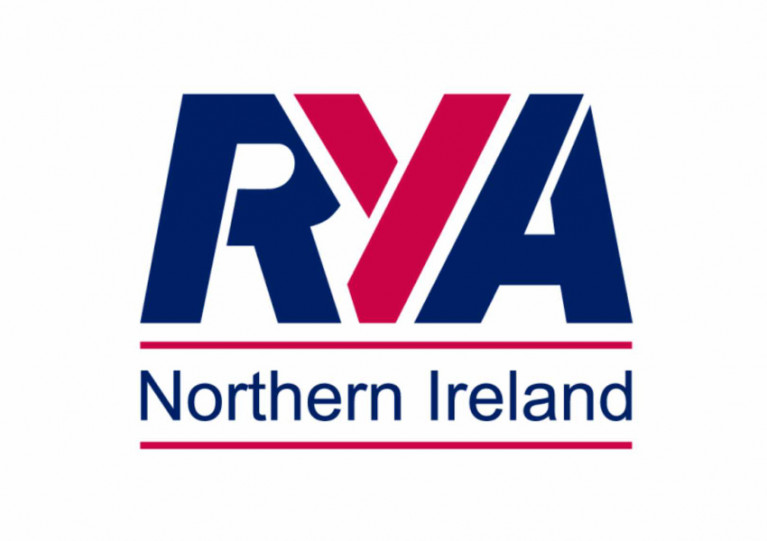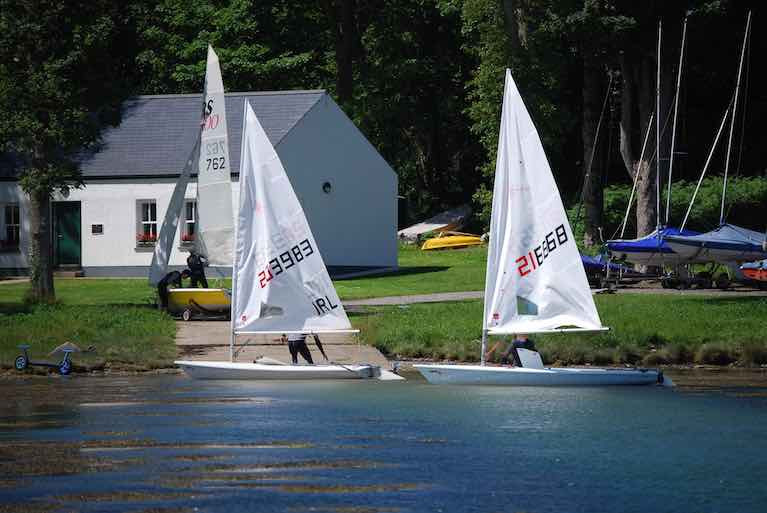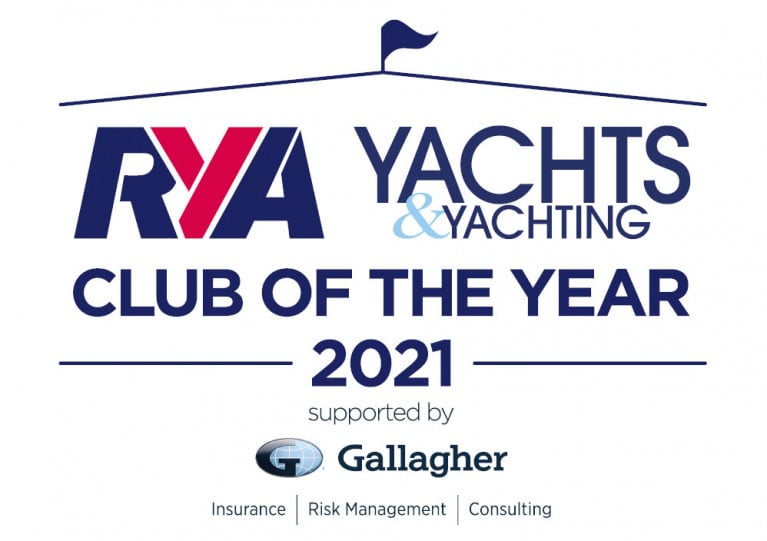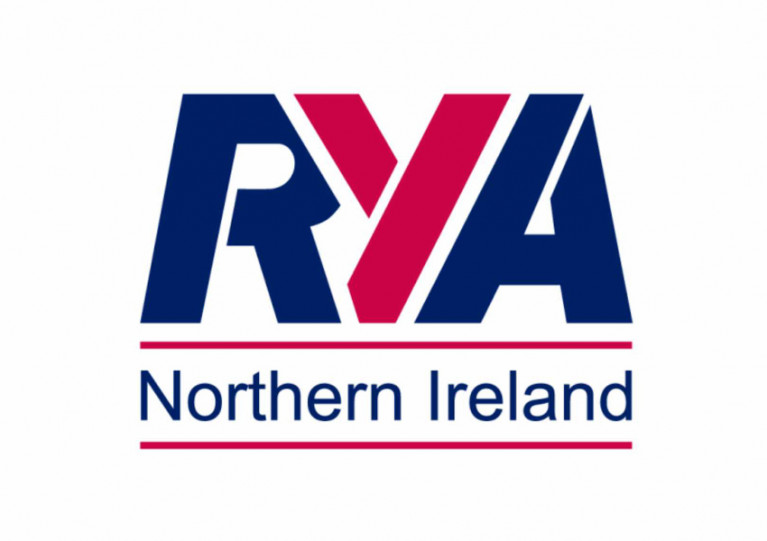Displaying items by tag: RYANI
The RYANI has broadly welcomed the news of easing of COVID-19 restrictions in Northern Ireland from 1 April, as announced last week by First Minister Arlene Foster.
The sailing and boating body saidL: “This is very welcome news and follows on from engagement with the Minister of Communities, who has continued to be an advocate for sport and outdoor activity.
“Our understanding is that this will include further easing of restrictions for boating activity, namely around venue access.
“We still await the issuing of the regulations and guidance from the department to understand implications across the boating community in full."
Full guidance is currently pending, but the RYANI has summarised the position as it understands:
- Updated Regulations are yet to be laid in order to confirm venues etc that may reopen from 1 April.
- In the absence of the regulations, affiliated boat clubs will be able to reopen outdoor facilities from 1 April. However, there will be stringent protocols required, including very limited numbers.
- Sailing, windsurfing and powerboating as individual, single household/bubble recreational activity will be permitted from 1 April.
- Activity with two different households is permitted only where 2m social distancing can be adhered to at all times and with a maximum 10 people.
- SportNI/Department for Communities will be briefing national governing bodies in coming days of the phases for outdoor sports, including more detailed guidance.
- The current sub-phases under Step 2 will move from recreational through to training and potentially competition.
- Once received, RYANI will be working to create guidance for clubs, centres and the wider boating community and we will share this as soon as practically possible.
“Although this announcement is welcome and further details are to follow, our current guidance remains in place, where club and other watersports facilities must remain closed,” the RYANI adds.
“We appreciate this will raise a large number of questions and will work to ensure appropriate guidance is issued at the earliest possible opportunity in order to allow you to make informed decisions.”
RYA Northern Ireland’s 2021 Cruising Conference Goes Virtual
The countdown is on for the virtual RYA Northern Ireland Cruising Conference 2021, which will take place online over three separate evenings in the new year.
The conference, which will be hosted via Zoom, will run on Tuesdays 19 and 26 January and Tuesday 2 February.
A jam-packed schedule of speakers and interactive sessions are promised, covering a wide variety of topics ranging from information on environmental affairs to sailing around Ireland and practical help with electronic safety equipment.
Conference delegates will benefit from updates on current RYA work for cruising members as well as interesting and informative key note speakers and workshop discussions.
The current programme kicks off at 7pm on 19 January with Colin Greetham of Ocean Signal discussing EPIRBs and PLBs, and Norman Kean waxing lyrical on sailing around Ireland.
On the 26th, Greetham returns for a talk on AIS, and conference attendees will get updates from the RYA on Brexit, environmental issues and Safetrx.
The final session on 2 February will see Greetham get into electronic distress flares, while Pat Murphy of Howth Yacht Club will talk the adventure that is sailing from Thailand to Egypt.
All three evening sessions are free and places can be booked online via Eventbrite.
RYANI Recognises Strangford Lough Yacht Club for Volunteers’ Tireless Efforts Ensuring Safe Return to Water
The second club to be celebrated in RYANI’s Recognition 2020 initiative is Strangford Lough Yacht Club, whose volunteers jumped into action to ensure the club was safe and ‘Covid-ready’ for when everyone could get back on the water.
The club was originally due to open its season at the beginning of May, but with coronavirus restrictions in place across Northern Ireland this wasn’t possible.
Instead, the club’s most dedicated volunteers set about getting safety measures in place for whenever they could open.
Some of the first measures SLYC put into place were hand sanitising stations throughout the club and its grounds. In the early stages a slipway booking system was implemented so the club could control how many individuals were in the club grounds at any one time.
Communication with members was key and there was frequent guidance issued by the club.
A craning team spent a lot of time overseeing the craning in of over 30 boats, which meant that by late May and early June many members and their families were able to safely enjoy cruising on Strangford Lough.
In July, restrictions were eased further and sailing training was permitted — a very important part of the club.
Committee members and instructors worked hard to ensure the club was in a position to safely deliver sailing courses, giving younger people (both members and non-members) the opportunity to take part in water activities in a safe environment while developing their sailing skills.
Club racing also commenced in July, with representatives from all classes getting on the water — providing a much needed sense of normality in very uncertain times.
September saw the return of SLYC’s most popular sailing series, the Frostie. Sailors from all across Strangford Lough eagerly travelled to Whiterock to take part in this annual series.
‘Despite the uncertainty that we all found ourselves in, the determination of many individuals was phenomenal and humbling’
With over 40 boats entered, it was one of the largest entries the club had ever seen and with strict safety procedures in place, it was also one of the most successful.
As the Frostie series came to an end, Covid restrictions came back into play. The craning team were once again working round-the-clock and in difficult weather conditions, ensuring that every boat was successfully recovered.
SLYC senior instructor Jack Kennedy said: “As soon as we were aware that Covid was going to affect things at the club, we took action straight away to get measures in place.”
He added: “Looking back at this year, despite constantly changing restrictions, SLYC delivered a very popular sailing event, training, club racing and cruising to its members and visitors. This was as a result of a fantastic team effort from both the Commodore’s Committee and the general membership of the Club.
“Despite the uncertainty that we all found ourselves in, the determination of many individuals was phenomenal and humbling.
“One of the most fantastic things about this sporting activity is the volunteers it has. So many individuals give both their time and expertise and this year it was needed even more.
“At SLYC, we hope that 2021 brings more normality and that we are able to be fully functional again, hosting sailing events, social events, club racing and training.”
RYANI chief operating officer Richard Honeyford said: “Volunteers at SLYC worked extremely hard to ensure that all measures were taken to ensure the club was safe for members to return to the club and the water.
“While it has been a particularly difficult time for everyone in our sailing and boating community, it is both heartwarming and inspiring to see the dedication and innovative ways our volunteers work.
“I commend SLYC for their efforts and wish them luck for the year ahead.”
Last week Foyle Sailability was the first club to be recognised as part of the RYANI’s Recognition 2020 initiative in lieu of its usual Annual Awards.
Northern Ireland Sailing Clubs Called for Submissions for New Sports Sustainability Fund
RYANI is encouraging sailing clubs across Northern Ireland to prepare for a joint application to the newly announced Sport NI Sports Sustainability Fund.
Northern Ireland Communities Minister Carál Ní Chuilín launched the £25 million fund for Governing Bodies and affiliated clubs on Friday 4 December.
The fund is intended to address the economic consequences of the coronavirus pandemic which has affected the sports sector, helping to minimise financial stress and sustain clubs.
Sport NI requires ‘consolidated’ submissions to be made, which means one submission per recognised sport.
To this end, RYANI is calking for all affiliated clubs to provide the relevant information as specified by Sport NI and within the given timeframes.
Correspondence has been sent to clubs asking those intending to submit an application to complete and return an expression of interest form by this Tuesday 15 December.
RYANI chief operating officer Richard Honeyford said: “We welcome the announcement that the sports sector will be receiving further support.
“We are looking to establish points of contact so we can advise of the process or the administration of this fund.
“Clubs should ensure they read the relevant Sport NI guidance and start to collate the necessary information requested in preparation for submission.”
Further details and links can be found under ‘Financial Package’ section of the RYANI Return to Boating Page.
RYANI Recognises Foyle Sailability For Keeping Members Connected and in Good Spirits During Lockdown
RYA Northern Ireland’s Annual Awards have been put on hold this year due to coronavirus restrictions but this doesn’t mean that the celebrations have stopped.
Virtually, RYANI will be celebrating clubs and the boating community right across Northern Ireland as part of its Recognition 2020 initiative, sharing amazing success stories from a very challenging year.
Speaking about the initiative, RYANI’s chief operating officer Richard Honeyford said: “We all know 2020 has been a tough year, especially for those who have lost loved ones or been otherwise impacted by the pandemic.
“The boating community has shown itself to play such an important part within local communities and we want to capture that effort and achievements in what has been extremely difficult circumstances.
“Whether it is an individual achieving something significant or a club supporting the NHS and key workers, we would like to hear from you.”
The first inspirational club in the Recognition 2020 series is Foyle Sailability. The club is vitally important for its members, providing them with a chance to sail and also the opportunity to engage with others.
When restrictions were announced, Foyle Sailability very quickly replaced regular events with online meetings. A lighthearted catch-up with some training and discussion around important issues facing the club, this gave members something to look forward to each week.
The weekly catch-up was such a hit with members that it has become a much-loved weekly event — and the WhatsApp group after the meeting is usually a hive of activity, keeping everyone connected and in good spirits.
Fundraising has been particularly difficult this year but the club has used online Zoom meetings to publicise its work. Recently an online meeting was set up with the club’s local Inner Wheel Group where members heard about Foyle Sailability’s important work.
They also had the chance to hear first-hand from chairman Garry Crothers about his journey sailing across the Atlantic single-handed. Garry, who lost an arm in a motorcycle accident in 2009, told an inspirational account of his trans Atlantic crossing.
Since the meeting, the Inner Wheel Group has announced it will adopt Foyle Sailability as its chosen charity this year. Other groups have also been in touch to find out what can be arranged via online meetings.
Foyle Sailability is a shining example of a club that has been adapting positively to the Covid restrictions. From innovative funding link ups to keeping members socially connected, Foyle Sailability is leading the way.
The club has always been forward-thinking, right back from its inception. The club started absolutely no equipment about eight years ago and they now have 4 Hansa 303s, a Hawk 20 and two safety boats.
Ken Curry from the club explains: “Initially members came for a sailing session with their local groups, and they may have seen them only once or twice. We then ran an inter college regatta for disabled students. We took the dinghies to the colleges and then ran on the water training sessions.
“The students loved it and we realised we needed to do more, so we set up evening sessions every two weeks due to tidal restrictions. Most of these students returned every time and are still regular participants.”
Commenting on pandemic restrictions, Ken explains: “When the Covid-19 restrictions came in, we all knew that there would be little or, as it turned out, no sailing this year. Our disabled members were so disappointed.
“Not only do they love sailing, but they love meeting up with their friends. They were going to miss the social side as much as the activities. Luckily we had a WhatsApp group to keep in contact.
“I decided to try Zoom for the first time so that we could all meet, see each other, chat, have some fun and also do training. It was such a success that the free Zoom 40 minute session wasn't long enough. So now with a full zoom membership, every Monday evening we carry out training and have loads of fun, too, with no time restrictions.
“Hopefully we can get back on the water early next year, but in the meantime, we continue to learn using the RYA Sailability Logbook as a guide and to enjoy each others’ company.”
RYANI’s Virtual AGM Reflects on Achievements in a Difficult Year
RYA Northern Ireland held its first-ever virtual AGM earlier this month, reflecting on a different but successful year for the sport leading up to April 2020.
Guests at the meeting included RYA chief executive RYA Sarah Treseder OBE, chair Chris Preston and Clodagh Cooke from the Northern Ireland Youth Forum.
During the meeting, both Sarah and Chris spoke to members, with Sarah also discussing the importance of clubs as a community. She talked about the positivity of clubs across Northern Ireland and how they have been helping their members and wider communities throughout Covid-19.
RYANI chief operating officer Richard Honeyford led the general business of the meeting, firstly addressing the key challenges clubs are facing due to Covid-19 and then reviewing the work that has taken place throughout the year until April 2020.
Club representatives and guests were then taken through proposed updates to RYANI Articles to allow questions to be raised. The Articles are now being sent to affiliated organisations for approval.
This was Jackie Patton’s final meeting as chair of RYANI. During her closing comments, she thanked everyone who had supported her during her three-year tenure. Susan McKnight from Strangford Lough Yacht Club was elected as chair and has now taken up her post.
Commenting after her election as chair, Susan said: “I am honoured to be taking on the position as chair and I am looking forward to working with the board, Richard and the whole RYA Northern Ireland team.”
James Ogg, Peter Kennedy, David Williams, Andrew Corkill, Roy Totten and Jill Heron were elected as directors.
Richard Honeyford commented: “While it has been a challenging year for us all, the RYA Northern Ireland AGM gave us a chance to reflect on the key challenges for our clubs and wider boating community. It also highlighted the excellent work that volunteers have undertaken and the success many of our sailors have had throughout the year.
“I would like to thank Jackie Patton for all her work as chair of RYA Northern Ireland and I welcome Susan McKnight as our new chair. I am looking forward to working with Susan and all of our directors and board members in the year ahead.”
Following the meeting, Clodagh Cooke from the Northern Ireland Youth Forum Belfast praised the establishment of the RYA Northern Ireland Youth Forum initiative and the work that had been achieved throughout the year.
She explained the importance of the relationship between NIYF and RYANI and introduced the RYA Northern Ireland young sailors who delivered a presentation during the meeting.
Jackie Patton, who leads on the RYANI Youth Forum, said: “RYA Northern Ireland has been working in conjunction with the Northern Ireland Youth Forum to set up our RYA Northern Ireland Youth Forum. This youth leadership and development programme is the first of its kind within the sport and the RYA.
“The NIYF has provided valuable support, leadership and funding to make this happen. Our own RYA Northern Ireland Youth Forum has already achieved so much and I would like to particularly acknowledge Kaitlyn, Abbie, Autumn, Cody and Charlie for their hard work and dedication. I look forward to seeing what the next year brings.”
Gordon Reid Returns to RYA Northern Ireland as Development Officer
Gordon Reid has rejoined RYANI as development officer to cover Mary Martin’s maternity leave.
An architect by profession, Reid is an experienced watersport enthusiast who has also worked in club and coach development with Rowing Ireland.
The Belfast man has a background in both rowing — he has been captain at Lagan Scullers’ Club for 25 years — and dinghy sailing.
He is an active sailor and instructor at East Down Yacht Club, Killyleagh Yacht Club and NI Sea Cadets, having competed in multiple Northern Ireland and international events.
 Gordon Reid is a director of the NI Sports Forum
Gordon Reid is a director of the NI Sports Forum
But he has also been involved with powerboating, windsurfing and kayaking — not to mention club administration, as Commodore of East Down Yacht Club.
He serves as director of the NI Sports Forum, and is a member of the Sport Matters Implementation Group for Participation.
Commenting on his new role, he said: “It is great to be back and getting up to speed with the new ways we can support individuals, clubs and centres as they seek to engage and hold onto members in these difficult times.
“I look forward to meeting representative of clubs and centres over the coming weeks, and I am keen to support members in their work, so that we can all become better at what we do.”
RYA Northern Ireland is giving sailing and boating clubs across the country the opportunity to access support for club membership and development by providing 'Rediscover Sailing Days'.
Following lockdown and a challenging few months, many clubs have seen increased interest and activity from their members, as well as attracting new members.
The Rediscover Sailing initiative will help to support sailing and boating clubs to encourage member activity, retain club membership, recruit volunteers, enhance the boating experience for members and assist with workforce development.
The initiative had been due to take place from May until September under the title of 'Discover Sailing', but due to Covid-19, this, unfortunately, had to be cancelled.
In previous years, the initiative has been a pivotal contributor to increasing the awareness of Sailing and boating in Northern Ireland, offering every one of all abilities the opportunity to try the sport.
This time there will be some added extras with workshops on boat maintenance and volunteer recruitment opportunities on offer, depending on the goals of the club.
RYA Northern Ireland's Active Clubs Co-Ordinator Lisa McCaffrey commented: "I am excited about the Rediscover Sailing initiative. There is still some uncertainty at the minute regarding Covid-19, but at the moment we are planning for the Rediscover Sailing Days, and these will meet all government guidelines. If things change, we will review the situation and adhere to all policies to ensure the safety of our clubs and their members. Clubs must connect with members at this time either to develop their Sailing, whether this is through activities or workshops.
I am looking forward to communicating with clubs again on potential participation opportunities; it is key for the future of our sport and its members."
If your club or centre is keen on organising a Rediscover Sailing Day there is more information here
Call For NI Clubs To Apply For RYA Club Of The Year Gong
Applications are now open for the 2021 RYA and Yachts & Yachting Club of the Year award supported by Gallagher.
The annual event celebrates the outstanding achievement and promote the hard work of sailing clubs in England, Wales, Scotland and Northern Ireland.
Last year’s award saw two NI clubs — East Antrim Boat Club and Strangford Lough Yacht Club — as well as Prestwick Sailing Club in Scotland make the list of finalists.
All RYA-affiliated clubs across the UK are eligible to apply and the award panel will select a finalist for each of the 10 RYA regions, as well as two ‘wild card’ entries.
During the shortlisting stage, the panel will also provide five clubs with recognition for particular achievements in the following five areas:
- Heart of the community — new for 2021, a recognition for a club that has worked tirelessly to support their local community. This could be through the efforts of volunteers working within their local area for good causes, sharing club facilities with those in need or opening their club up to local community groups to get out on the water.
- Modern, innovative and forward thinking — recognition for a club that makes a break from traditional ways of running a club or delivering boating activity. This could be delivering different formats of training or racing to engage new participants, creating new membership models or embracing the use of modern communications.
- Sustainability — another new category with recognition for a club that has embraced sustainability and demonstrably reduced its own and/or its members impact on the environment through education, action or improved facilities.
- Inclusive and open to all — recognition for a club or project which has been impactful in developing participation amongst people with disabilities or from other under-represented or disadvantaged groups.
- Boosting membership — recognition for a club that has delivered the most impactful participation project, the outcomes of which are, attracting and retaining new participants and growing their membership.
All finalists go through to a public vote with the overall winner selected by RYA members, Yachts & Yachting readers and the judging panel.
‘It feels more important than ever to recognise the people who have worked tirelessly to ensure that others can continue to get out on the water safely’
The overall winner of the 2021 RYA and Yachts & Yachting Club of the Year will be announced at the RYA Dinghy Show scheduled for next February.
“The past few months have been hugely challenging for clubs, so it feels more important than ever to recognise the people who have worked tirelessly to ensure that others can continue to get out on the water safely and enjoy what they love doing,” said RYA director of sport development, Alistair Dickson.
Yachts & Yachting editor Georgie Corlett-Pitt added: “While recent months may have posed many unprecedented challenges for our clubs, they have also brought to the fore the spirit and resilience of the sailing community.
“This year more than ever we look forward to acknowledging those achievements with the RYA and Yachts & Yachting Club of the Year awards.”
Club applications close on Monday 21 September. For more information on the award and to complete an application form, visit the RYA website HERE.
RYANI has has issued new guidance which allows for sailing and racing for people from different households in Northern Ireland waters.
The guidance has been developed within the current coronavirus legislation and follows the parameters now also in place in England.
It is based upon an assessment of team sports, feedback from the Sport NI Expert Panel and the mitigations required to lower the risks of virus transmission in multi-crewed boats.
The guidance does not include those at a ‘Learn to Sail’ level, which means only proficient sailors can crew with different households.
The move comes two months after many single-handed or single household sailors got back afloat.
RYANI chief operating officer Richard Honeyford said the governing body “strongly believes that the highest risk will often be before and after going afloat”.
‘It remains vitally important that the boating community continue to take a considerate and responsible approach’
He explained: “The new RYANI guidance on sailing and racing with participants from different households during Covid-19 that has been published today (Friday 14 August) outlines the ways in which skippers and participants should review risk and how they might mitigate against that risk in a team environment.”
The guidance highlights the increased risk of certain on-board activities such as rigging, hiking out or two-person winch operation.
It also recognises that while social distancing of two metres may not always be possible onboard, it should always be possible to maintain a minimum separation of 0.5m and outlines other mitigations that should be considered.
Honeyford added: “It remains vitally important that the boating community continue to take a considerate and responsible approach, assessing the risks and following the appropriate mitigating actions.
“We must all play our part and respect any measures that our clubs deem necessary to put in place to allow multi-crewed craft afloat.”




























